Arabs and the rise of Islam
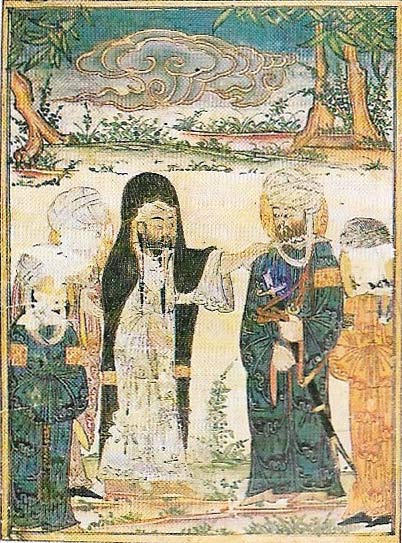
Figure 1. Mohammed designated Ali as his immediate successor according to the doctrine of the Shiites, and by the evidence of this miniature. But members of the Sunni sect accept Ali only as the fourth caliph.
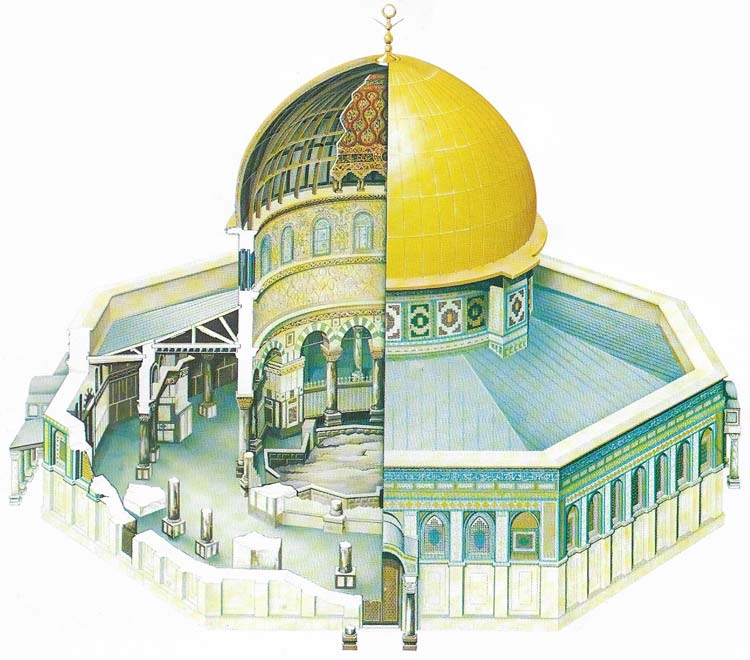
Figure 2. The Dome of the Rock is a striking example of the cultural nerve that Arab conquerors had to muster in order to elaborate a new monotheism in the face of the ancient traditions of Judaism and Christianity. Built by Abd al-Malik (685–705) on the Jewish temple site in Jerusalem and filled with polemical inscriptions, it certainly advances an Islamic claim to supersede Judaism and Christianity, as opposed to merely coexisting with them in the form of yet another revelation. But this claim was too demanding to be consistently maintained. The dome is a good example of the re-shaping of old cultural material to create a new civilization: largely Byzantine in derivation, the result is distinctly Islamic. The building is a shrine but the Islamic significance of the rock it encloses is not clear. Most believers now associate it with Mohammed's heavenly journey.
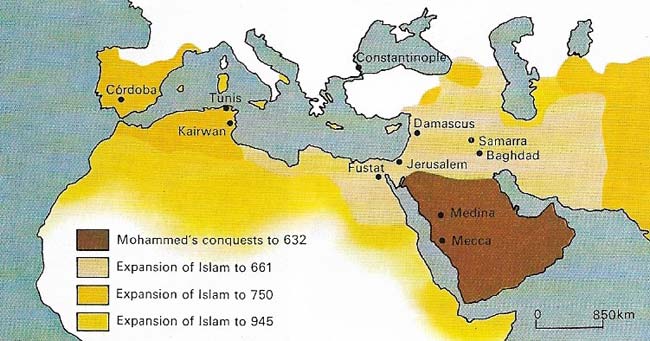
Figure 3. The unification of Arabia is traditionally credited to Mohammed and was accomplished before his death in 632. Egypt and Syria were taken from the Byzantines and Iraq, and the Iranian plateau from the Sasanids between 632 and 656, when civil war broke out. The first Umayyad caliph, Muawiya (r. 661–680), resumed Arab expansion in North Africa and eastern Iran, while a second thrust under Walid I (r. 705–715) pushed the Arabs into Spain and India; but a last attempt to conquer Constantinople in 715–716 failed. At the end of the Umayyad period (750) the limits of Arab expansion were the Pyrenees, the Sahara, the Caucasus and Turkestan. Further expansion, whether Arab or Islamic, became the work of local dynasties, militant fraternities and missionaries and merchants, and such expansion continued far beyond 950.
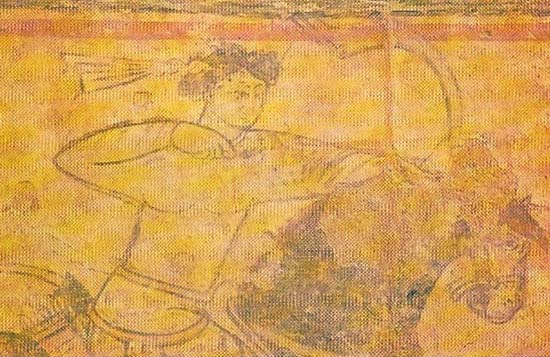
Figure 4. A mounted archer (detail from a Palmyra fresco) typifies the kind of Turkish slave soldier from Transoxania who swelled the ranks of the Islamic armies. Transoxania, which was once the eastern frontier of Iran, is now wholly Turkish. Divided into well-entrenched principalities, it was a difficult place for the Arabs to conquer. As a result, Iranian culture survived and it was in this marginal province that the revival of Iranian literature in Islam took place from the tenth century on-wards. Transoxania was exposed to Turkish tribes and after several invasions was overrun, eventually to become Turkish.

Figure 5. A hoard of Arab coins from a tenth-century Viking grave in Sweden represents payment for the slaves, fur and honey that were exported to the Muslims by the Vikings who colonized Russia.
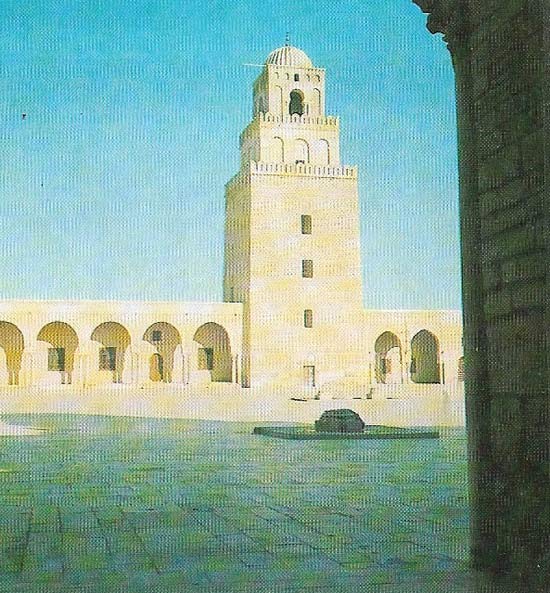
Figure 6. Kairwan, in Tunisia, was founded as a garrison city for the settlement of Arab soldiers. It soon became a center of learning and orthodoxy in North Africa, which was at that time inhabited overwhelmingly by Berbers. On conversion, the Berbers repeatedly made use of the program of tribal state formation and conquest enshrined in the Prophet's career, in the name of a doctrine that was sometimes reformist, sometimes heretical. Although North Africa is extensively Arabized today, it still has a substantial Berber population. But Arab or Berber, Islam among North African tribesmen is highly distinctive, centering on holy men often identified as descendants of the Prophet.
Arab expansion was a tribal conquest of civilization. Such conquests are commonplace in history, but the Arabs are the only people who started a new civilization as a result of their conquest. This came about by a combination of two special circumstances. First, on the side of the conquerors there was a unique fusion of religious conviction (Figure 2) and tribal military force. The Arabs conquered the Middle East (Figure 3) in the name of a monotheism that sanctified their tribal heritage over and against the conquered civilizations and their conquests were so successful that they had no need to come to terms with those civilizations anyway. Thus the Arabs could avoid being culturally absorbed by the peoples they had conquered.
Second, on the side of the conquered peoples there prevailed in Egypt, Syria and Iraq a unique type of provincial culture. Having lost their own civilizations some 1,400 years before when they first came under the rule of alien empires, these provinces had not yet been fully assimilated by Byzantium and Iran. As a result, they were less committed to these civilizations and the Arabs were exposed only to a culture filtered through a provincial milieu and language. These provincial cultures, pale versions of their imperial civilizations, could thus be reshaped by the Arabs.
The strength of the Arab position as against the weakness of provincial culture is the keynote of early Islamic history politically, culturally and ethnically.
The political influence
Politically, the strength of the Arab position determined the evolution of the Arab conquest society. With the Umayyad dynasty (Figure 3) (661–750) the capital was moved from Medina to Syria where a tribal confederacy formed the basis of the caliphs' power; in the provinces the tribal armies were placed under tribal leaders in a system of indirect rule. Within some 40 years kinship ties had been eroded and the tribal armies gave way to professional soldiers and civilians.
Normally, the loss of the tribal organization means that the conquerors must borrow the political organization of their subjects or suffer political disintegration; either way the conquered civilizations eventually win. But among the Arabs the sanctity of the tribal past meant that neither of these eventualities came to pass and the obsolete organization was retained until the third civil war (744), which was followed by the Abbasid revolution. It was thus that the Abbasids (750–1258) had to govern an Islamic empire as opposed to an Arab conquest society without losing the link with the tribal past, a problem that eventually proved insoluble. Although the Arabs attempted in various ways to foster an imperial ideal and aristocracy within Islam on the Iranian model, the fourth civil war (811–813) meant the failure of such attempts, the adoption of slave armies (Figure 4) as the instrument of government and, soon afterwards, the dissolution of the unitary state. The delay, however, meant that meanwhile Islamic civilization had developed sufficiently to survive.
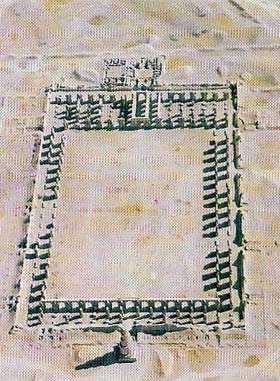 |
| The Great Mosque at Samarra in central Iraq dates from the ninth century when Mutasim (r. 833–842) in 836 made the town the capital of the Abbasid Empire. In 892 the caliphs returned to Baghdad. |
Islamic culture and learning
Culturally, Arab strength accounts for the character of Islamic learning. The core of Islam is a revealed law, actually created in Iraq in the eighth and ninth centuries from a variety of foreign materials, but in theory based exclusively on the Koran and the Prophet's works. It was the learned laity studying Islamic law who came to be seen as the heirs to Mohammed's preaching. It follows that it was not difficult to create an Islamic scholarship, overwhelmingly Arab in orientation; but it was not so easy to create an Islamic philosophy and science. The Arabs did inherit Greek philosophy from the conquered provinces, but being neither Arab nor Islamic, such teaching was regarded as ungodly wisdom. Although philosophy continued to be cultivated, it was gradually relegated to marginal and heretical circles.
Ethnic development
Ethnically, the weakness of provincial culture explains the overwhelming Arab influence on the Middle East. Islam began as a religion for Arabs, but could not remain so when the non-Arabs began to convert to it. From being an ethnic faith on the Judaic model it had to become a universal belief on the Christian model, but the transition was never quite completed. Mohammed was an Arab who, unlike Jesus, had never ceased to be honored in his own community and in his name the Arabs had conquered a kingdom that was very much of this world (Figure 6). The notion that a Muslim was in some sense an Arab, and Islamic civilization in some sense Arabian, therefore proved extremely tenacious. In the ninth and tenth centuries non-Arab converts, especially Iranians, attempted to disentangle Islam from its Arab origins, insisting that Islam was a faith that could be combined with any identity and culture; but the success of these so-called shuubis was limited. The three provinces – Egypt, Syria and Iraq – all became Arab countries, while Iran, not a province but an empire, retained its Iranian identity but largely lost its Iranian civilization. Only where Islam has spread peacefully, as in parts of black Africa and Java, has it proved flexible enough to combine with a local culture. In the Middle East the ancient intransigence of Islam vis-a-vis such cultures has a modern sequel in the preference for Arab as opposed to Egyptian, Syrian or Iraqi nationalism.
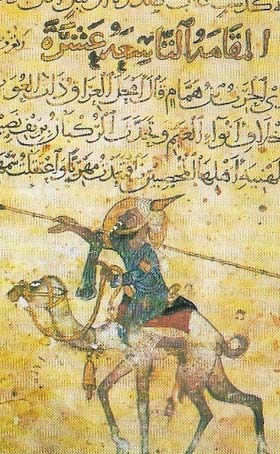 |
| Camel-breeding Bedouin tribesmen roamed over most of Arabia before the days of oil. South Arabia had sufficient internal resources to maintain stable state structures, while in the north external resources were often available in the form of commercial revenues or imperial subsidies. But most of the peninsula was too poor to support a non-tribal organization. Here Mohammed was the first, but not the last, to create a state in the name of a religious doctrine. By uniting the tribesmen as believers and calling on them to wage war against the unbelievers, he provided a rationale for a con-quest of the fertile lands that culminated in the formation of a vast empire. |
